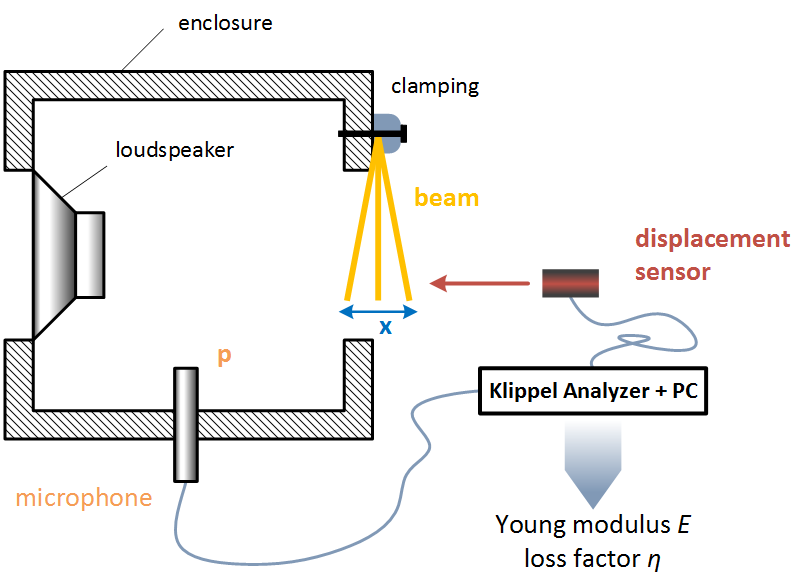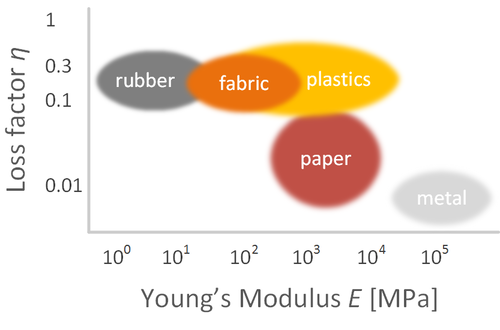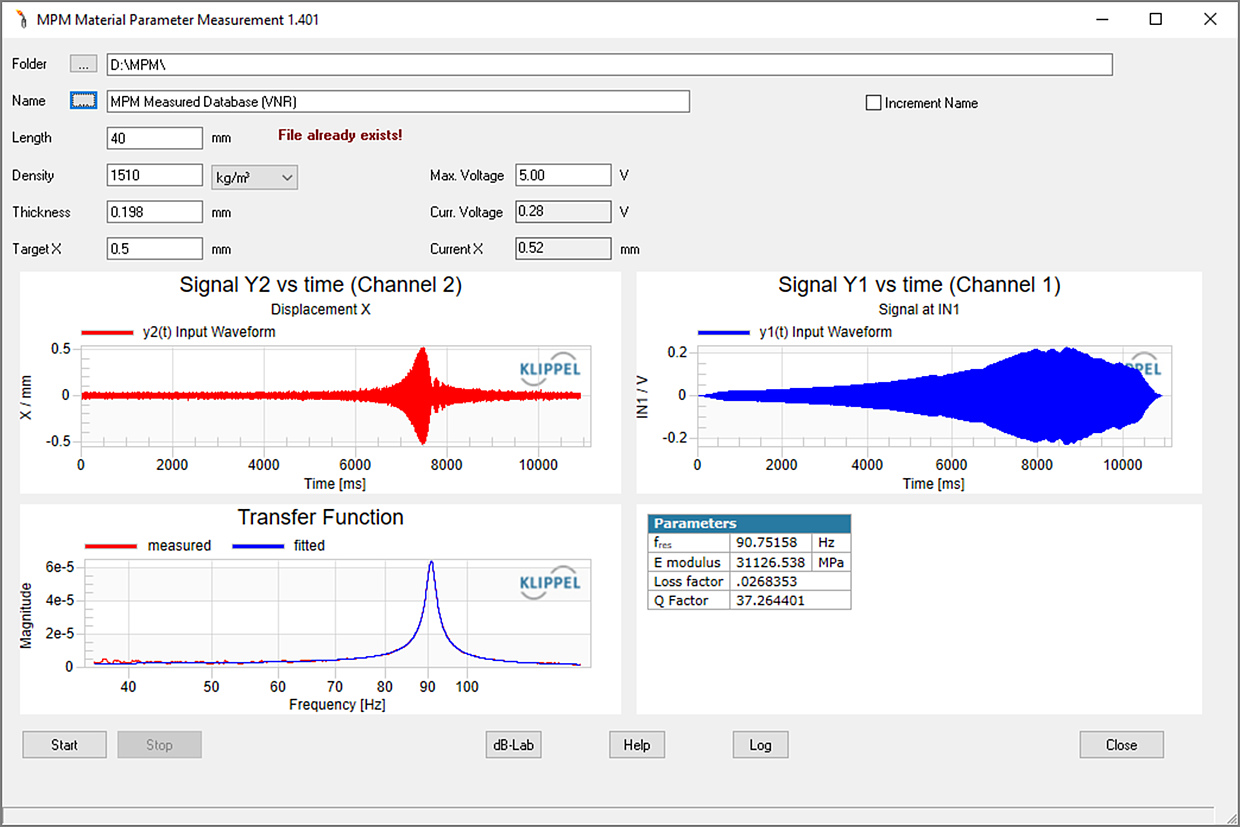Material Parameter Measurement (MPM)
Features and Benefits
The Material Parameter Measurement Module (MPM) measures the Young’s (E) modulus and the loss factor η of the raw material used for loudspeaker design. The vibration beam technique (ASTM E 756-93) is modified to be capable of measuring also soft materials, such as thin foils of plastic, rubber and any kind of paper and impregnated fabric. After cutting 1cm strips, the probes are clamped on one side and excited pneumatically by using the Suspension Part Measurement bench (SPM bench).
Specification
Standard measurements
Requirements
Hardware
• Klippel Analyzer 3 (KA3)
Module
• Material Parameter Measurement (MPM):
Software for parameter measurement: E modulus, loss factor
• Transfer Function Measurement (TRF):
Measurement of transfer function and harmonic distortion
Accessories
• MPM Clamping Set
• SPM bench
• 1/4" Microphone
• Laser
• Amplifier
• Computer
Demo Video
Introduction MPM
With loading this video, you agree that your data will be transferred to YouTube and that you have read our data protection policy.
Examples
The figure (on the left) shows the user interface of the MPM software for measuring the Young’s (E) modulus and loss factor of material samples. The software automatically adjusts the voltage of the stimulus to generate the desired target value of the maximal displacement (in this example 1 mm). The density of the material, the thickness of the sample and the length of the beam are additional input parameters provided by the user.
Standards
American Society for Testing and Materials
ASTM E111 - 04, ASTM E756



